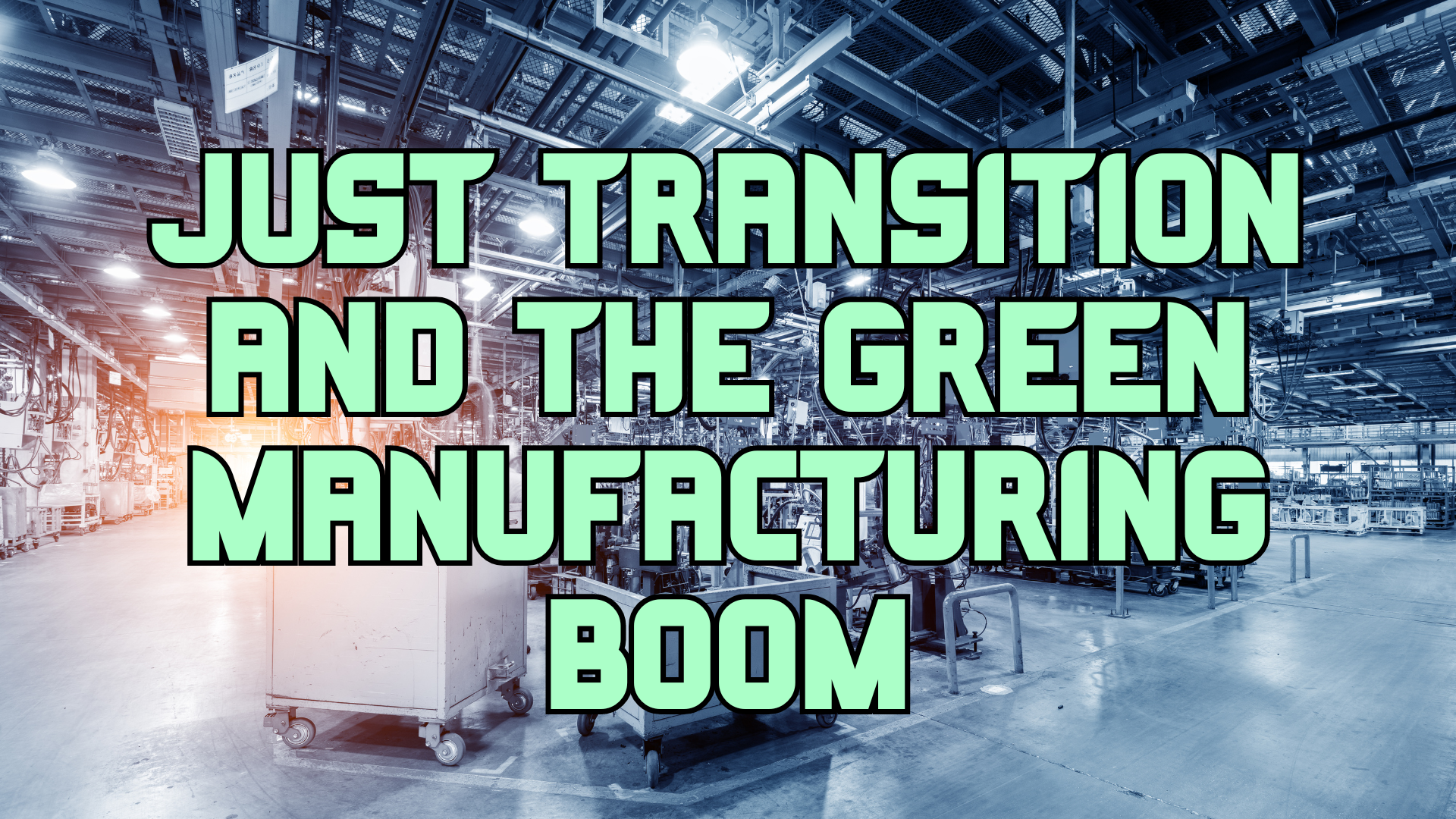
In the ever-evolving landscape of global energy, the transition towards renewable resources is murky and unclear. Yet, amidst this transformation, it’s imperative to ensure that no one is left behind. This concept is encapsulated in the notion of a “just transition,” which not only emphasizes environmental sustainability but also prioritizes social equity and economic justice.
At the heart of this transition lies the shift from traditional fossil fuels to renewable energy sources such as solar, wind, and other green energy pathways. This transition isn’t merely about swapping energy sources; it’s about reimagining entire industries, redefining job roles, and revitalizing communities that have predominantly suffered the frontline burdens of pollution from these industries. There is a lot of argument and uncertainty about what this shift will do to local economies and existing jobs. Many have incorrectly said we cannot transition from fossil fuels without losing jobs, products, and services.
One of the most promising aspects of this transition is the potential for a significant increase in manufacturing driven by renewable energy resources. Here’s how it works:
1. Renewable Energy Infrastructure Development:
The expansion of renewable energy infrastructure requires a substantial amount of manufacturing. Solar panels, wind turbines, batteries for energy storage, and other components essential for renewable energy generation are all manufactured goods. As the demand for renewable energy continues to soar, so does the need to manufacture these components.
2. Job Creation and Economic Growth:
Manufacturing is a cornerstone of economic development, providing jobs and stimulating local economies. The shift towards renewable energy not only creates opportunities in manufacturing but also in installation, maintenance, and other related sectors. These jobs range from highly skilled technical roles to entry-level positions, offering opportunities for individuals with diverse skill sets and backgrounds.
3. Regional Development and Resilience:
Renewable energy projects often require local manufacturing facilities to produce components and materials, fostering regional development and resilience. By decentralizing manufacturing and energy production, communities can become less reliant on centralized fossil fuel infrastructure, reducing vulnerability to supply chain disruptions and price fluctuations. When investing in local businesses resources are more likely to remain in our communities, stimulating our economies.
4. Environmental Benefits:
Manufacturing renewable energy components contributes to reducing greenhouse gas emissions and mitigating climate change. Unlike fossil fuel extraction and processing, renewable energy manufacturing processes are generally cleaner and less resource-intensive, leading to a lower environmental footprint. While renewables are considered “cleaner”, it is important to acknowledge that rare mineral extraction for components in renewables is an ongoing challenge.
5. Social Equity and Inclusive Growth:
A just transition ensures that the benefits of renewable energy manufacturing are equitably distributed. This includes providing training and education opportunities for workers transitioning from fossil fuel industries, prioritizing investments in communities disproportionately impacted by environmental degradation and industry closures, and fostering partnerships with local stakeholders to ensure everyone has a voice in the transition process.
Case Study: The Renewables Revolution and “Just Transition” in Centralia Washington
In the United States, many communities have depended on fossil fuels for energy, resources, and jobs, but what happens when these industries are no longer profitable? Communities are left reeling, dealing with the loss of these major economic players. Those who have supported these industries for years are ultimately left unsupported when the sites close with no plan to assist the communities they benefited from. However, the community in Centralia, Washington provides a different model. There, the community and their closing power plant met to determine the best way for a just transition, with great success.
Centralia and other communities transitioning from the fossil fuels industry to the renewable industry are now leading the charge in producing components for wind turbines and electric vehicles. This transformation revitalizes local economies and positions these communities at the forefront of the green economy.
Conclusion:
The surge in manufacturing driven by renewable energy resources is not just about building a sustainable future; it’s about building a fairer, more inclusive society. A just transition prioritizes the needs of workers, communities, and the environment, ensuring that no one is left behind in the shift toward a cleaner, more prosperous future. By harnessing the power of renewable energy, we can create jobs, stimulate economic growth, and pave the way for a brighter tomorrow for all.
